While Paul Simon’s collaborations and reunions, particularly the iconic Central Park concert with Art Garfunkel, often dominate discussions, there’s a compelling need to explore the nuanced brilliance within his solo work. Among his albums, 1983’s Hearts and Bones frequently finds itself overshadowed by masterpieces like Still Crazy After All These Years or the globally acclaimed Graceland. This exploration isn’t about revisiting well-trodden paths; instead, it’s a focused appreciation for Hearts and Bones, an album recorded across diverse studios and under various producers, for harboring within its grooves three exceptional Paul Simon Songs that stand tall in his impressive discography. These aren’t just album tracks; they are cornerstones of Simon’s songwriting prowess, recognized by the artist himself through their inclusion in his 1984 solo acoustic tour and the comprehensive 1964/1993 box set.
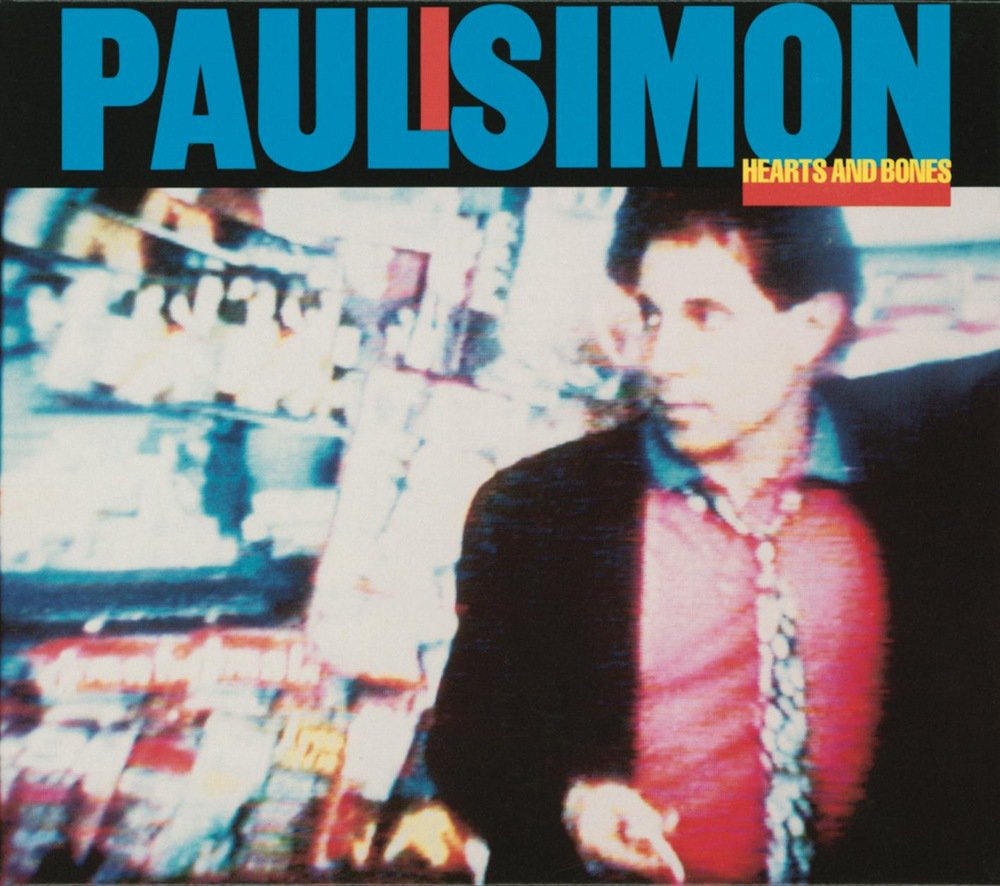 Paul Simon Hearts and Bones album cover
Paul Simon Hearts and Bones album cover
“Hearts and Bones”: A Chronicle of Love and Life
The eponymous track, “Hearts and Bones,” is a deeply personal narrative, charting the intricate and often turbulent relationship Paul Simon shared with Carrie Fisher. The media has extensively covered their romance, but the song transcends tabloid fodder, offering an intimate glimpse into the emotional landscape of their time together. Fisher herself acknowledged the song’s power, famously stating, “If you can get Paul Simon to write a song about you, do it, because he is so brilliant at it.” This track is more than just a relationship chronicle; it’s a testament to Simon’s ability to transform personal experience into universal art.
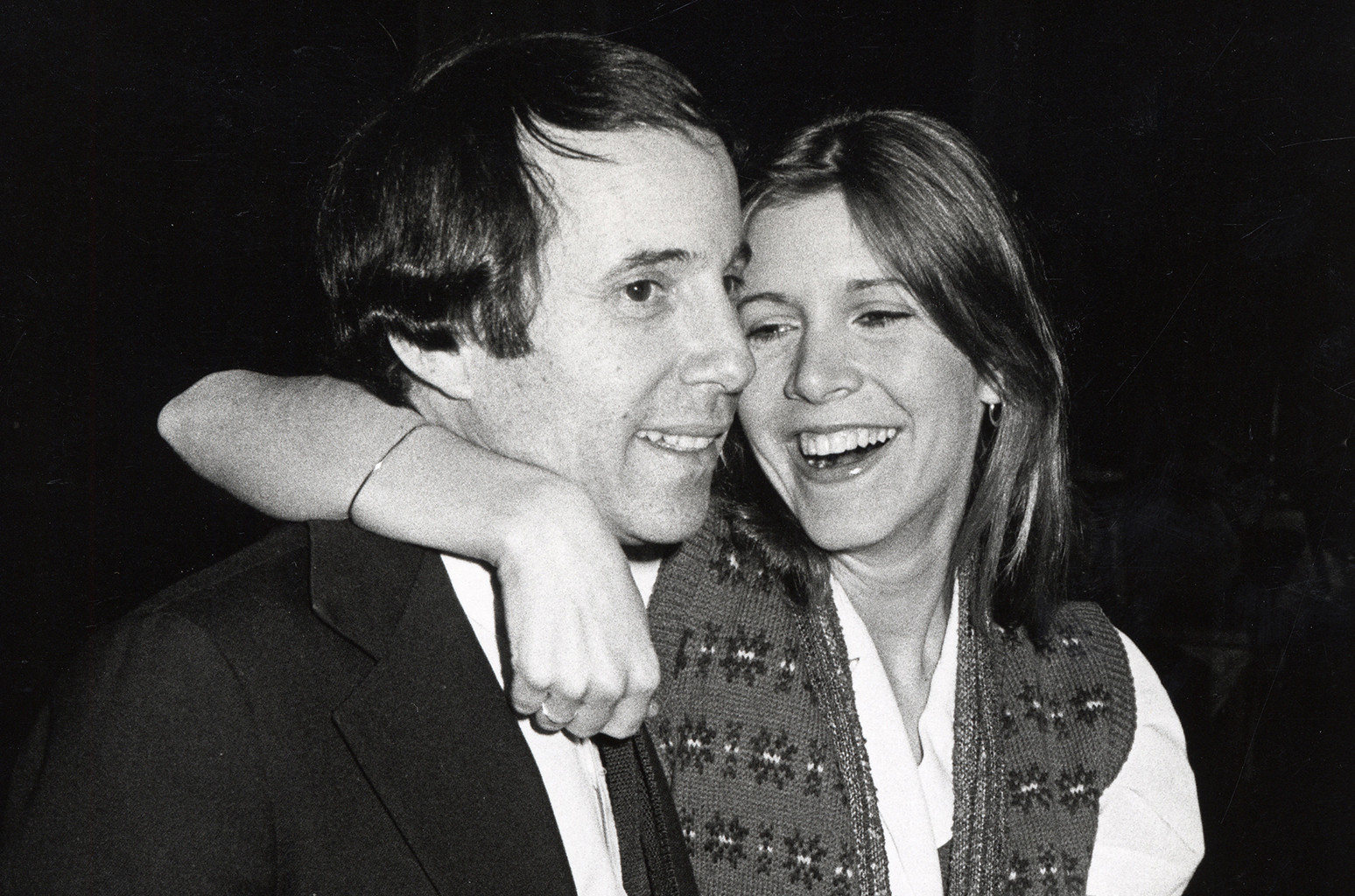 Paul Simon and Carrie Fisher in the 1970s
Paul Simon and Carrie Fisher in the 1970s
Originally conceived under the working title “Into the Liquid Unknown,” the song’s opening line underwent several iterations, from “Two Wanderings Jews” to “Almost Two Wanderings Jews,” before settling on the subtly humorous yet poignant “One and One Half.” This reflects Simon’s meticulous approach to songwriting, seeking a factual grounding as a starting point. As Simon explained in a 1984 Cinemax special, “I try in the first line of a song to say something that is true. Not an emotional truth but a fact.” “Hearts and Bones” is a masterful blend of lyrical depth and musicality, featuring evocative phrases like “the arc of a love affair,” painting vivid imagery in the listener’s mind. Simon also credits this song with a lyrical technique that became prominent in his later work, particularly Graceland: “That device in lyrics writing, repeating a line that is not the title… I learned that lyric trick writing Hearts and Bones.”
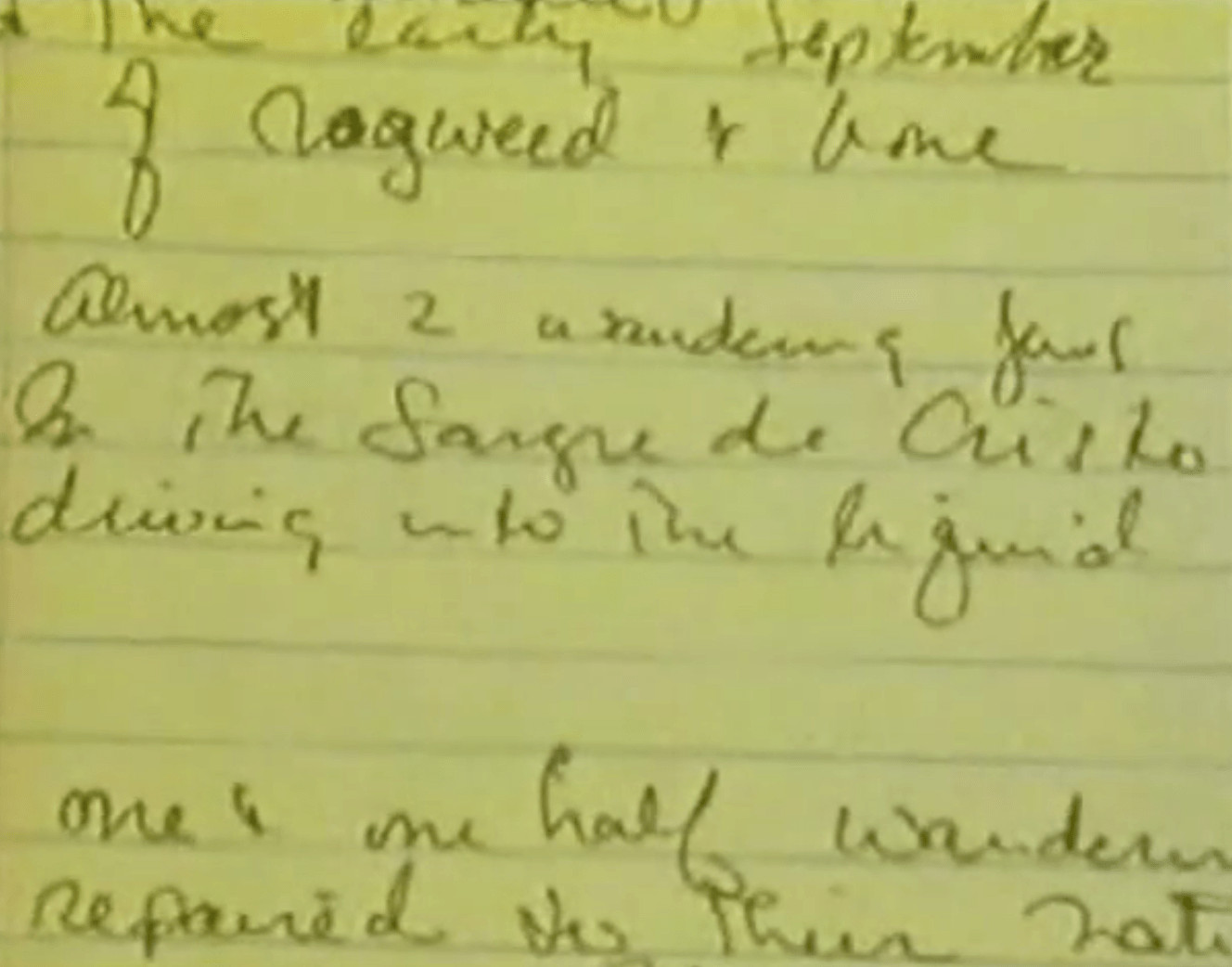 Handwritten lyrics for Hearts and Bones by Paul Simon
Handwritten lyrics for Hearts and Bones by Paul Simon
In an interview with Paul Zollo, Simon himself recognized the song’s significance, stating, “That’s one of my best songs. It took a long time to write it and it’s very true.” He also reflected on the album’s sequencing, regretting not placing “Hearts and Bones” as the opening track, underscoring its importance within the album and his catalog. Musically, the song is enriched by stellar performances. Dean Parks’ delicate acoustic guitar, Airto Moreira’s subtle percussion, and Mike Mainieri’s marimba and vibes create a rich sonic tapestry. Anthony Jackson’s distinctive six-string bass riff provides a grounding element, while Steve Gadd’s hand drumming adds rhythmic complexity.
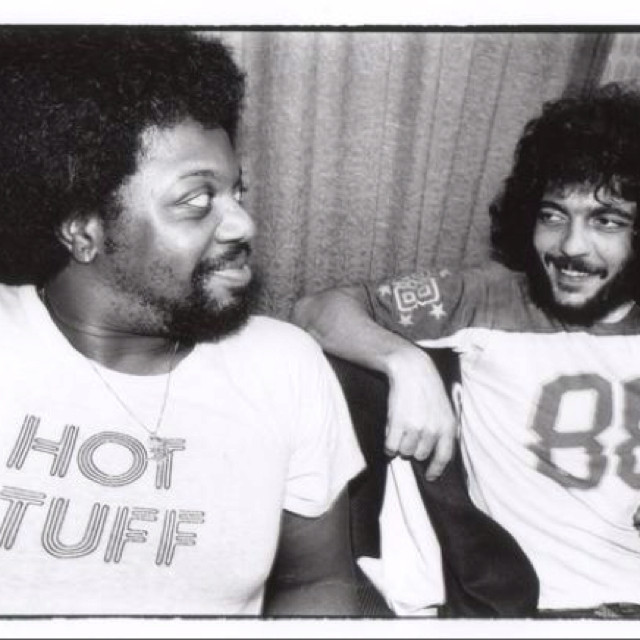 Richard Tee and Steve Gadd, musicians on Paul Simon's Hearts and Bones album
Richard Tee and Steve Gadd, musicians on Paul Simon's Hearts and Bones album
The song structure itself is a marvel, shifting seamlessly through different emotional terrains, exemplified in the poignant exchange:
Whoa whoa whoa
She said why? Why don’t we drive through the night
We’ll wake up down in Mexico
Oh I I don’t know nothin’ about nothin’
About Mexico
And tell me why
Why won’t you love me
For who I am
Where I am
He said ’cause that’s not the way the world is baby
This is how I love you baby
This is how I love you baby
 Dean Parks, guitarist on Hearts and Bones
Dean Parks, guitarist on Hearts and Bones
“The Late Great Johnny Ace”: Bridging Eras and Emotions
“The Late Great Johnny Ace” showcases Paul Simon’s penchant for weaving personal memories with broader cultural narratives. Like “Kodachrome” and “My Little Town,” it draws from his past, but it also transcends personal nostalgia, connecting the tragic death of rhythm and blues singer Johnny Ace in 1954 with the later assassinations of John F. Kennedy and John Lennon. This juxtaposition of personal and public grief, linked by the recurring motif of gun violence, is both powerful and unsettling. Johnny Ace, known for his posthumous hit “Pledging My Love,” becomes a symbol of lost potential and a precursor to further tragedies. Simon’s performance of “Pledging My Love” on his 2000 tour, leading directly into “The Late Great Johnny Ace,” underscores this connection.
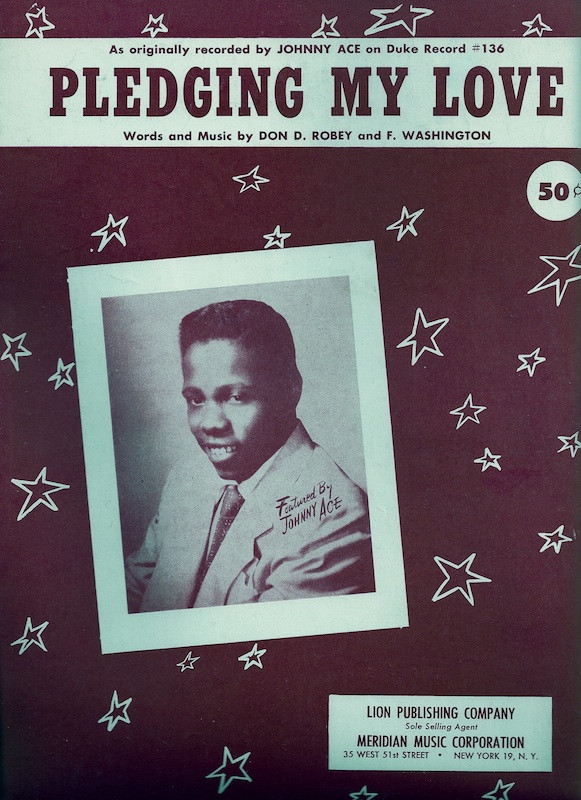 Johnny Ace Pledging My Love album cover, 1955
Johnny Ace Pledging My Love album cover, 1955
Simon revealed that the song’s genesis dated back before John Lennon’s death, built around a chord progression he favored. The assassination provided the missing piece, connecting the earlier verses about Johnny Ace and the bridge, which Simon described as being “about JFK, the other late great Johnny Ace.” This structural ingenuity, blending disparate timelines and personal reflections, elevates the song beyond a simple tribute. Simon’s appreciation for 1950s music is evident, as he noted in a 1984 Playboy interview, “My main influences in early music were Fifties R&B, Fifties doo-wop groups, Elvis Presley and the Everly Brothers.” This influence permeates “The Late Great Johnny Ace,” albeit in a more somber and reflective tone.
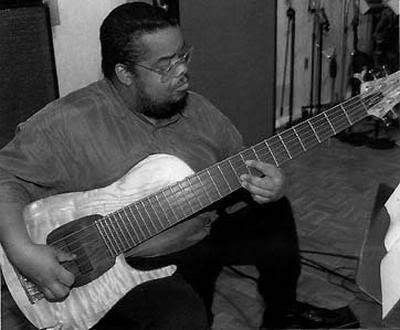 Anthony Jackson playing contrabass guitar on Hearts and Bones
Anthony Jackson playing contrabass guitar on Hearts and Bones
The song’s structure is punctuated by unexpected shifts, notably the section beginning with “and the music was flowing,” adding a layer of dramatic intensity. However, the most striking structural element is the Philip Glass coda. This collaboration, born from Glass’s recent work on Koyaanisqatsi, introduces a minimalist, almost cinematic dimension to the song. Simon praised Glass’s “end piece” concept, which avoids melodic recapitulation, instead offering a related but original musical addition. This coda, reminiscent of Glass’s “Pruit Igoe,” has become integral to live performances, influencing Simon’s approach to song endings and segues.
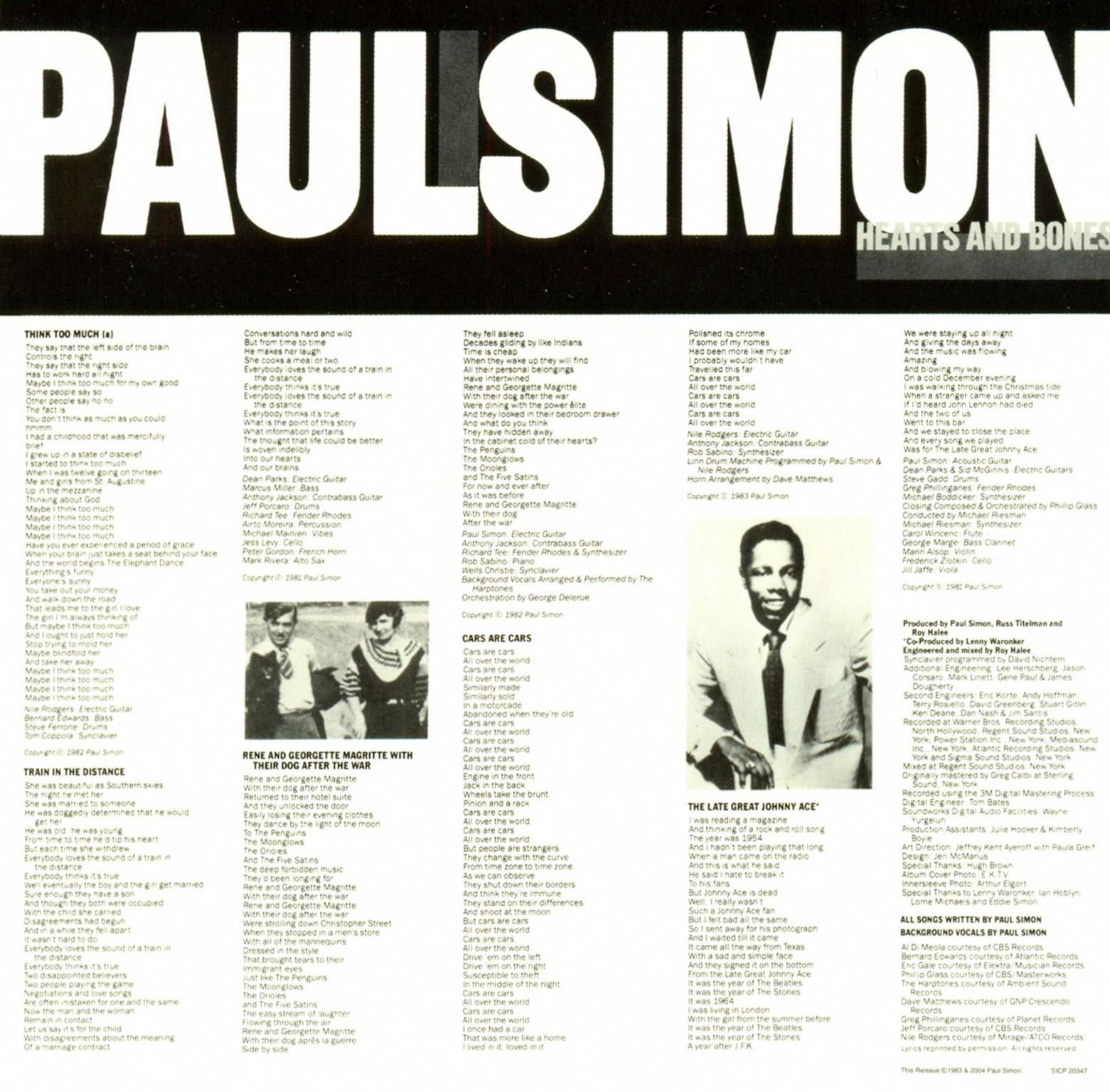 Hearts And Bones Japan inner sleeve
Hearts And Bones Japan inner sleeve
“Rene and Georgette Magritte with Their Dog After The War”: Surreal Lyrics and Doo-wop Dreams
For many, and arguably for Simon himself, “Rene and Georgette Magritte with Their Dog After The War” represents the pinnacle of Hearts and Bones and perhaps even his entire songwriting career. The lyrics are as surreal and evocative as Magritte’s paintings, a testament to Simon’s evolving lyrical sophistication. In a 1984 Playboy interview, Simon asserted, “Maybe on this new album, where the lyrics are my best.” The song’s genesis is itself an intriguing anecdote. Inspired by a photograph of René Magritte and his wife Georgette, Simon initially misremembered the caption as “After The War,” sparking the song’s title and melodic direction during a drive in Montana.
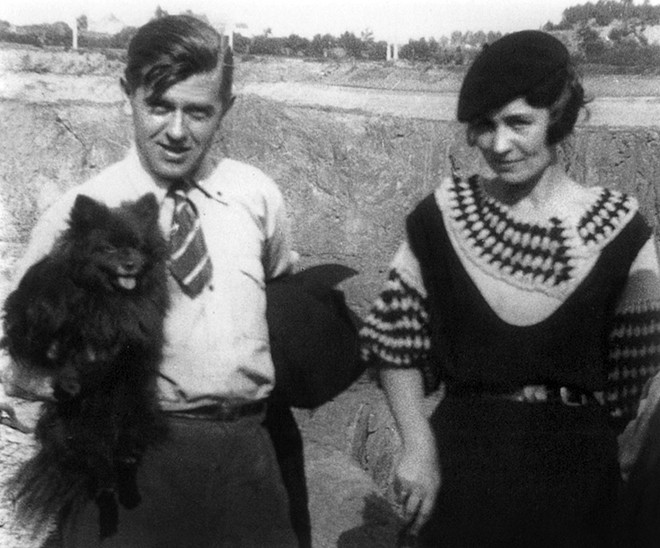 Rene Magritte and his wife Georgette with their dog
Rene Magritte and his wife Georgette with their dog
This song exemplifies Simon’s exploration of language, blending “vernacular speech” with “enriched language,” creating a conversational yet subtly poetic texture. As Simon explained in a 1990 SongTalk interview, “The language starts to get more interesting in Hearts and Bones. The imagery started to get a little interesting.” Lines like “decades gliding by like Indians” emerged spontaneously, showcasing his intuitive lyrical process. Simon further dissected his word choices in an interview with Bill Flanagan, highlighting the deliberate rhythm and sound of phrases like “Easily losing their evening clothes” and the surreal quality of band names like “The Penguins, the Orioles, the Five Satins.” These names, while perhaps unfamiliar to younger audiences, evoke a specific era and musical style, fitting seamlessly into the Magritte-inspired dreamscape.
 Golconda 1953 by Rene Magritte
Golconda 1953 by Rene Magritte
The song is a heartfelt tribute to doo-wop music, Simon’s first love. He explained, “My first introduction to Rock n Roll was vocal groups in the mid fifties… I always go back to that sound.” The mentioned groups – The Penguins, The Moonglows, The Orioles, and The Five Satins – were chosen not necessarily as personal favorites but for the evocative sound of their names, blurring the lines between birds and band names, much like a Magritte painting.
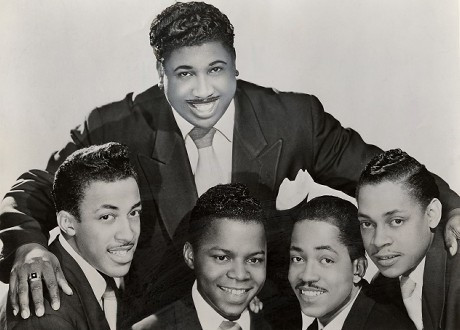 The Orioles doo-wop group
The Orioles doo-wop group
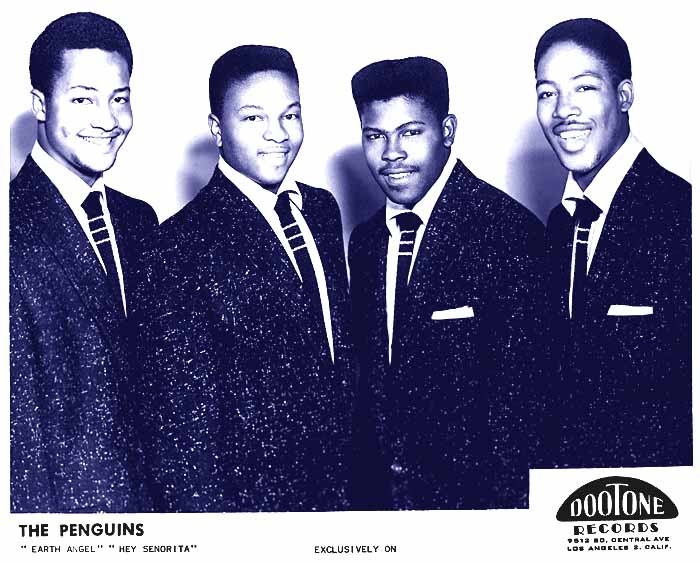 The Penguins doo-wop group
The Penguins doo-wop group
These groups, prominent in the late 40s and 50s, each contributed significantly to the doo-wop genre. The Orioles, pioneers of the sound, had a hit with “(It’s Gonna Be A) Lonely Christmas.” The Penguins achieved fame with “Earth Angel,” The Moonglows with “Sincerely,” and The Five Satins with the enduring classic “In the Still of the Night.”
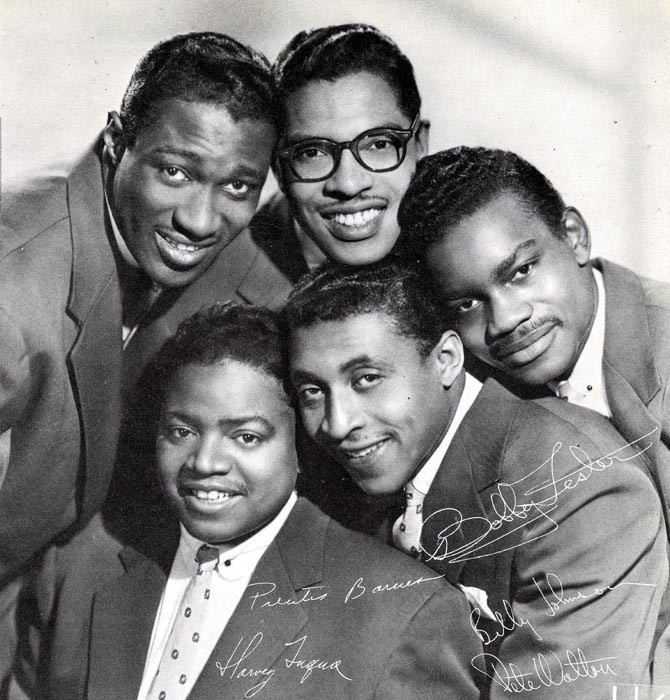 The Moonglows doo-wop group
The Moonglows doo-wop group
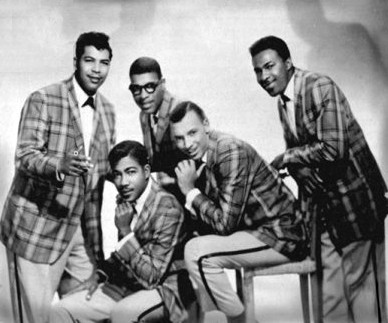 The Five Satins doo-wop group
The Five Satins doo-wop group
To further enhance the song’s authenticity, Simon enlisted The Harptones, a genuine doo-wop group from the 1950s, for backing vocals. Rob Sabino’s piano accompaniment perfectly captures the era’s musical style, while Georges Delerue’s lush string arrangements add a layer of cinematic beauty.
 Paul Simon in 1983 promoting Hearts and Bones
Paul Simon in 1983 promoting Hearts and Bones
Rediscovering Hearts and Bones
Hearts and Bones, while perhaps not as consistently celebrated as other Paul Simon albums, is a treasure trove of songwriting brilliance. “Hearts and Bones,” “The Late Great Johnny Ace,” and “Rene and Georgette Magritte with Their Dog After The War” are not just highlights of the album; they are essential Paul Simon songs, showcasing his lyrical depth, musical innovation, and enduring artistic vision. Exploring these tracks reveals a deeper appreciation for Simon’s artistry and the often-overlooked gems within his extensive catalog.
For further listening, explore the demo version of “Rene and Georgette Magritte with Their Dog After The War” and the album version to appreciate the song’s evolution:
And if you are still seeking more on the Simon & Garfunkel era, this article offers a unique perspective: Think Too Much: The S&G Album That Wasn’t.
If you enjoyed this exploration of Paul Simon’s Hearts and Bones, you might also find these articles of interest:
Al Bowlly’s in Heaven, by Richard Thompson
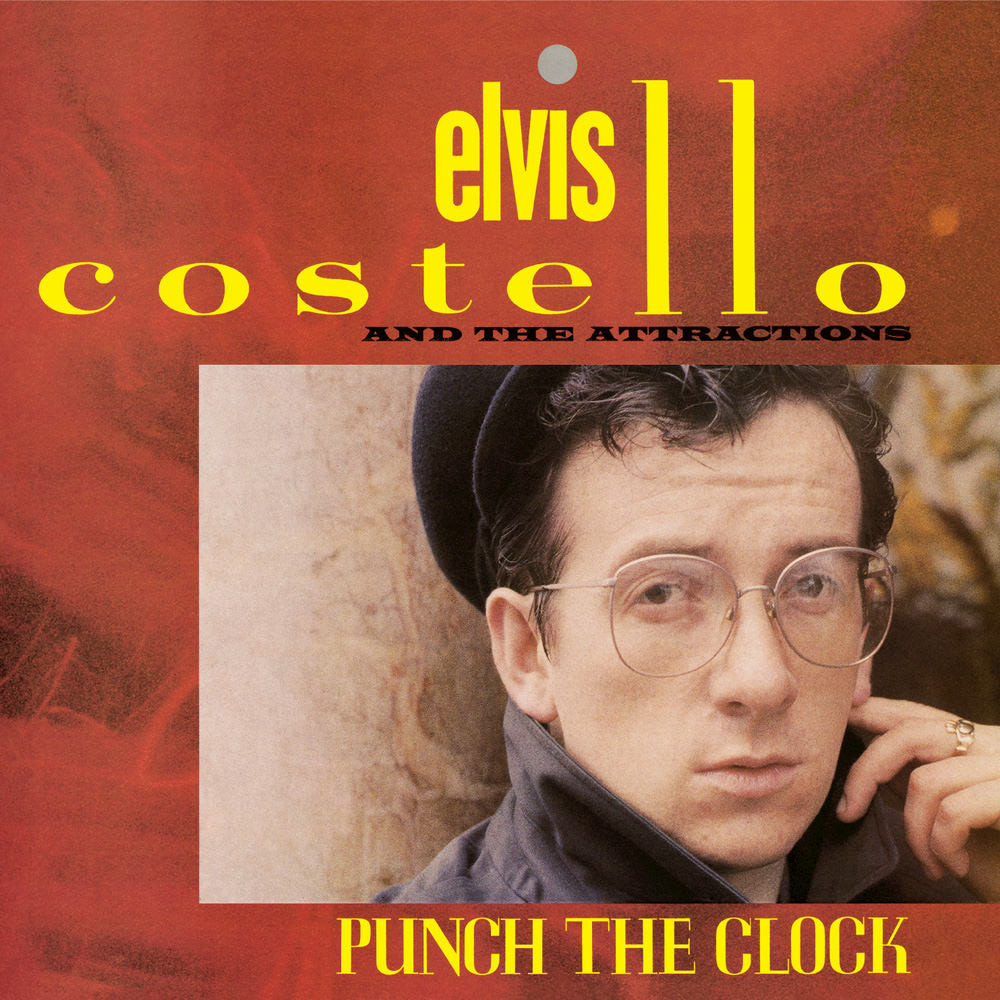 Richard Thompson Punch the Clock album cover
Richard Thompson Punch the Clock album cover
Shipbuilding, by Elvis Costello
